The Teahouses of Myanmar
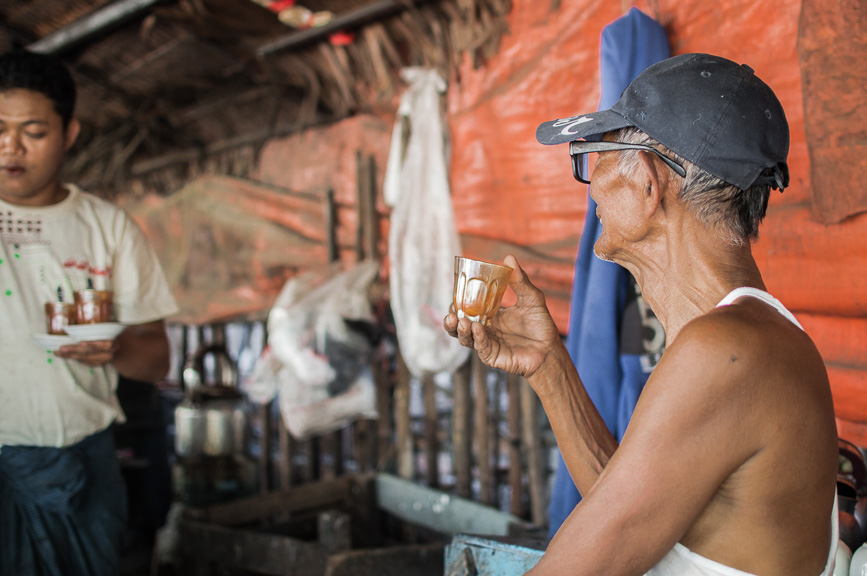
“Dissue.”
“Tissue.”
He shakes his head. No. No.
“Deeeessue. Dee. Dee.” he says with clear exasperation.
I point at the box of tissues on the table. “Dissue?”
He nods. Finally. Yes.
I am having my five minute Burmese lesson with Keh Keh, a boy of no more than 12 years old, hanging out at the family-run Duhtawadi teahouse in Hsipaw. He finds my pronunciation amusing, I have obviously failed to adopt the standard Myanmar transformation of “t” into “d”.
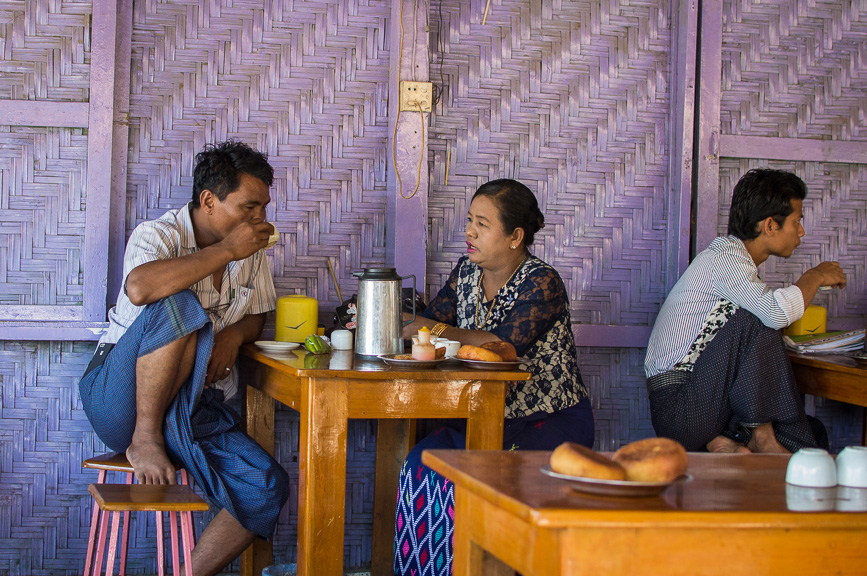
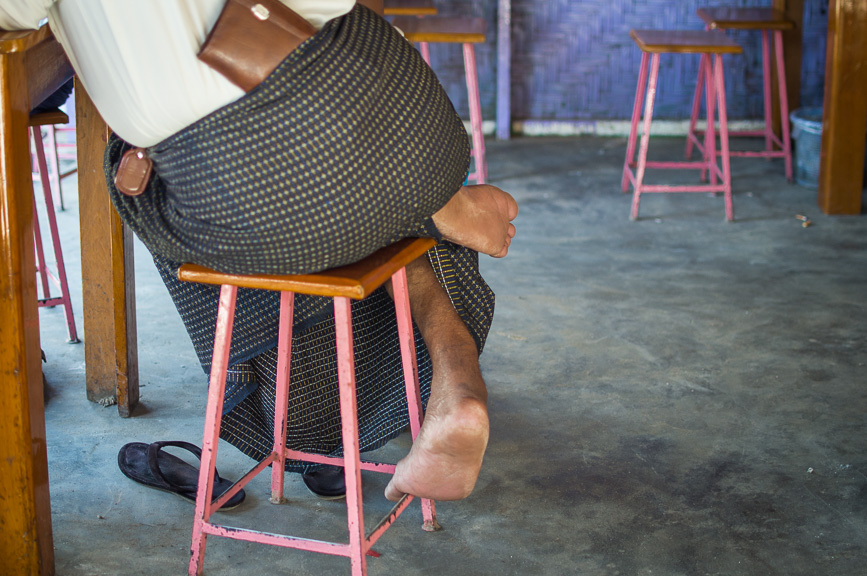
We are waiting for our lahpetyei gyo လက်ဖက်ရည်ချို, sweet milky tea. Wing Jang, the tea brewer, is ladling out hot syrupy liquid into plastic bags, take-out for the nuns in pale pink robes and conical hats. Each cup of tea has enough condensed milk to give you a sugar high, and ours is brought to us in small coffee cups, the liquid caramel toffee overflowing into the saucer.
My hands wrap tight round the scorching cup and I look up at the cool white and red tiles lining the wall. Eggs are stacked in paper crates ready for tomorrow’s breakfast and the diner-themed benches are red teak; between them wooden tables with metal sheets nailed onto their surface. With some minor tweaks, this would fit right into a trendy neighbourhood of Brooklyn or Berlin.
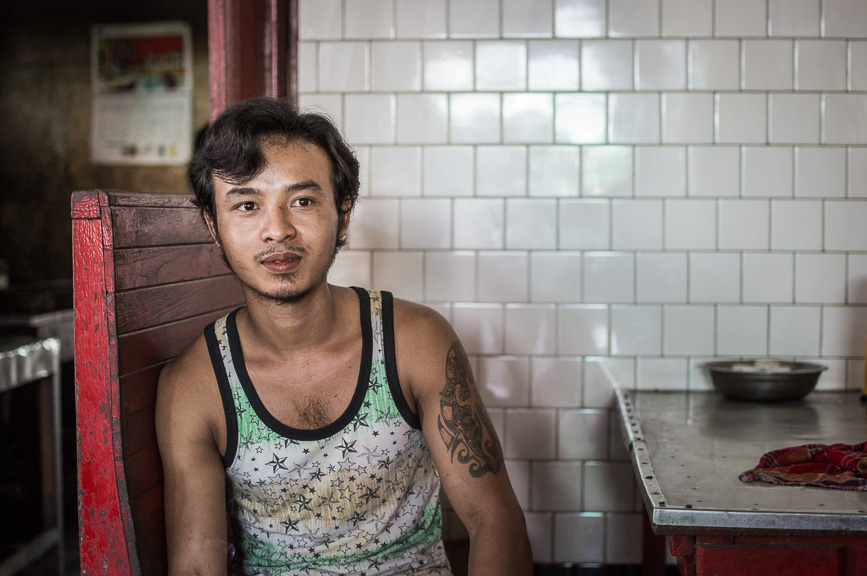
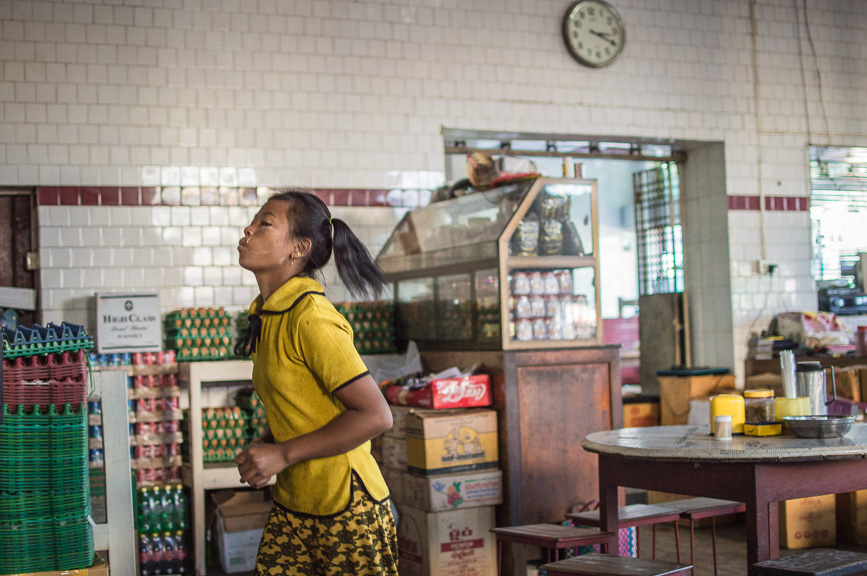
And this kept happening again and again. All over the country, the teahouses of Myanmar are straight out of a Wes Anderson dream. Purple rattan panelling, rusty metal stools, bright plastic chairs and faded turquoise walls. Whirling grate fans blow out more dust than wind and antique knick knacks fill each corner. It is mind-boggling that Anderson has not come to shoot on location yet. I am placing a bet that eventually he will.
Teahouses in Myanmar are an institution. On every corner, at every market, it is a place of business and politics. In the past, being one of the few countries which drinks its tea, but eats it too, lahpet took on the symbolic role as a peace offering between warring kingdoms. In more recent history, it was even served in civil courts after a verdict was passed. By eating it, the participants demonstrated acceptance of the judgement.
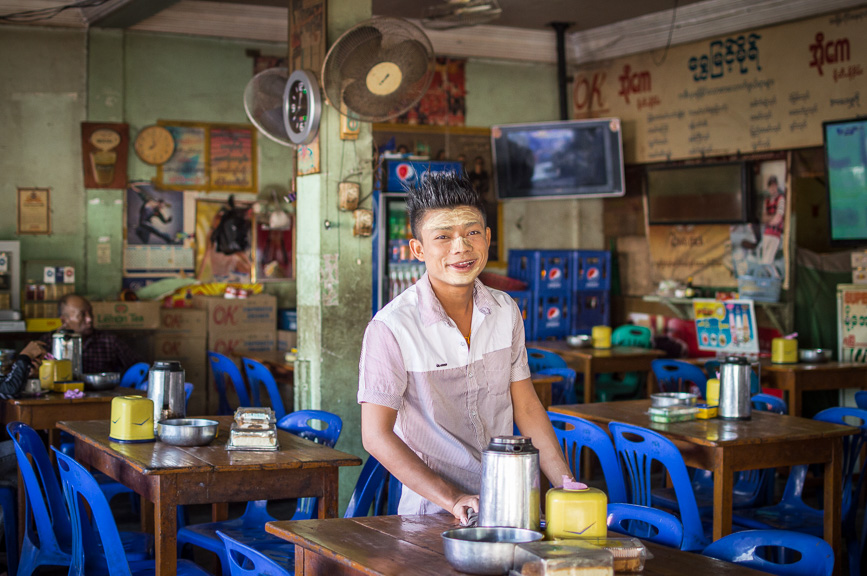
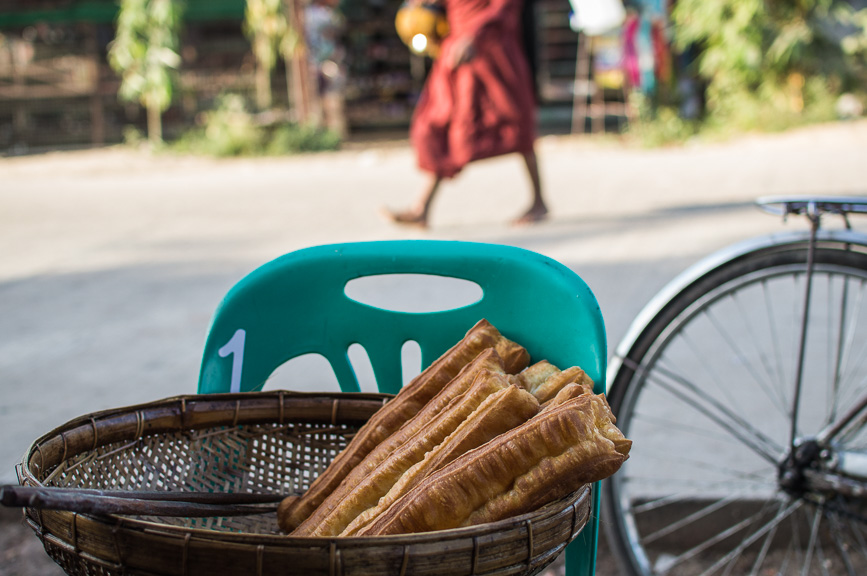
Hours can be whiled away in a teahouse, some stay open late into the evening, showing a football match or a movie, with customers bringing their own takeout from the shop next door to have their dinner with their beloved blend of milky tea. Today, there are people deep in a serious conversation behind us, their wallets tucked into the waist of their longyis. Another table of men order a few loose cigarettes; delivered in a little transparent box, these usually go for 50 kyat each (€0.04 cents). Outside a group of tattooed men are playing a board game involving cowrie shells and a bowl of dice, we pay attention and try to figure it out, but after 20 minutes, we are none the wiser. Other establishments have taken the leap forward by providing internet, their customers usually completely engrossed in their smartphones.
Armed with our hot tea, we are ready for breakfast. The teahouse is at its busiest in the morning, samosas and char kway (breadsticks) are being deep fried in a giant wok, naan bread kneaded and stretched to be topped with a mung bean or chick pea sauce – naan pyah. The menu often depends on the origins of the teahouse owner, we had chinese spring rolls and steamed buns in Kyaingtong, naan with butter and sugar in Hsipaw, Shan noodles and mohinga (rice noodles in fish soup) in Mandalay. One of our favourites was a deep fried flattened bun stuffed with shreds of fresh coconut and sugar. Extra carb kick for the rest of your day.
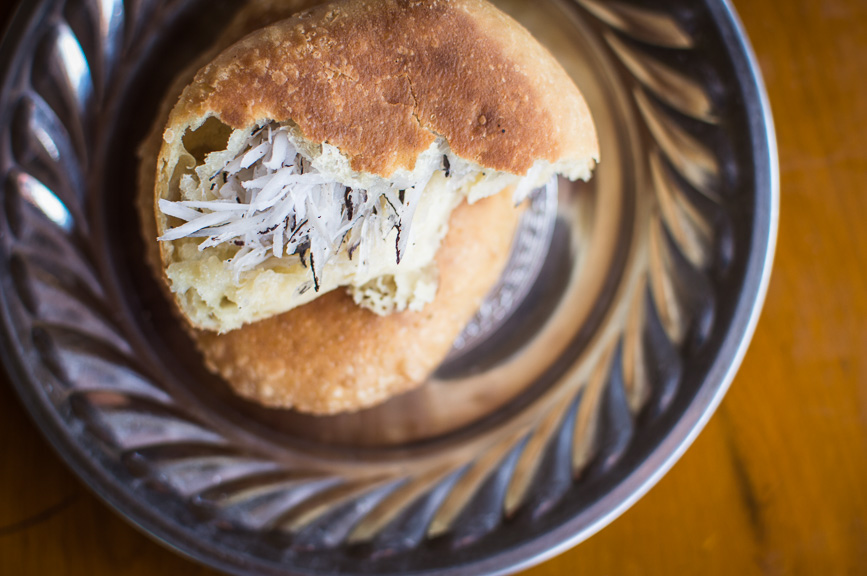
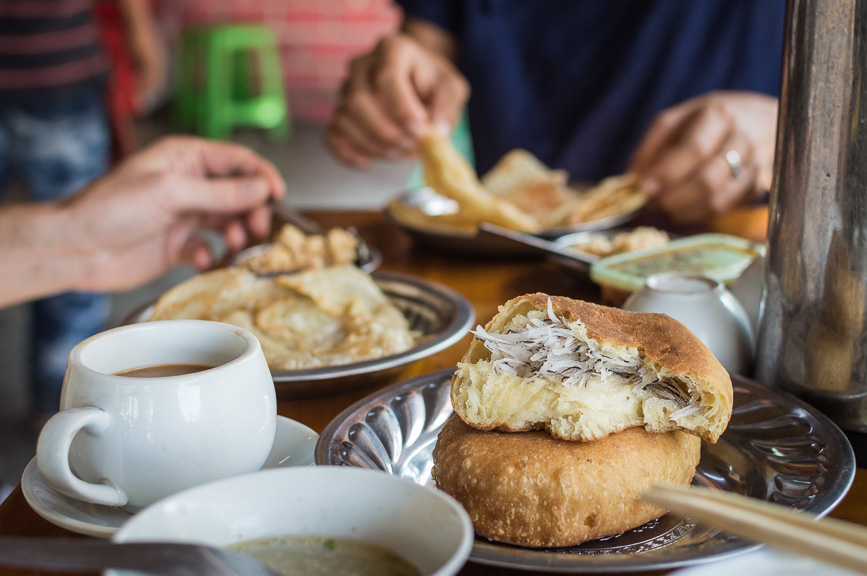
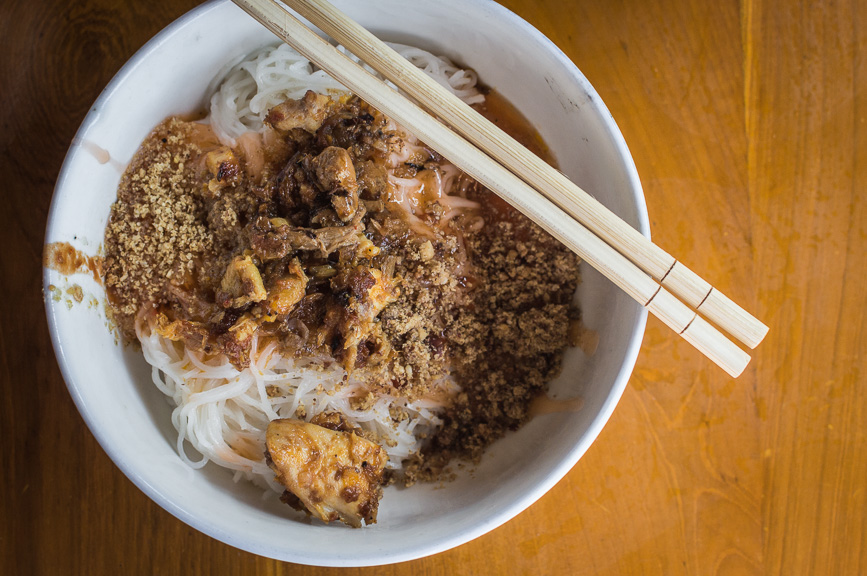
Burmese tea looks deceptively simple, but there are many variations on the basic mix of strong tea, boiling water, evaporated milk and condensed milk. Usually there will be three large pots warming over a wood-fired stove, one with black tea, one with simmering water and one with diluted hot milk. For 200 kyat (€0.20 cents) you can have your own little cup of the sweet stuff; or if you can take the sugar hit and plan on staying longer, you can get a whole mdabu – thermos.
These are the versions we picked up –
“Lah patyei” – known as “normal tea” which is actually tea already mixed with milk and sugar (the recipe is below)
“Bone mahn” – also known as “milky tea” with extra evaporated milk, if you cannot take strong tea, this is the one
“Cho seh” – also known as “milky sweet” with extra condensed milk, just thinking about it makes my teeth hurt
For a glimpse of daily life in Myanmar, nothing beats a morning at a local teahouse; but making a cup of hot lah patyei will give you a taste without ever leaving home at all.
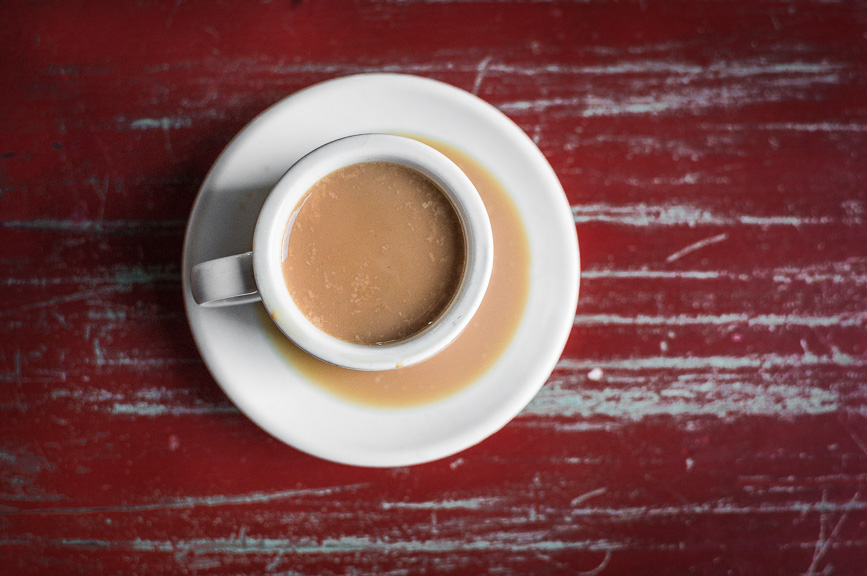
LAHPATYEI GYO Burmese Milky Tea \ˌbərmiz mɪlki ti\ လက်ဖက်ရည်ချို
Serves 4
3 tbsp of Burmese or Assam tea leaves (or your favourite black tea)
8 tbsp evaporated milk
4 tsp condensed milk
4 tbsp boiling water
a pinch of salt
This makes the standard lahpatyei, you can of course play around with the proportions.
Bring about three cups of water to boil with the pinch of salt and turn it down to a low simmer. Throw in your tea leaves loose or in a tea strainer. Let the tea steep at a gentle simmer until the water is a dark liquorice brown. You could also leave the pot there all day and heat it to a simmer when you need it to make endless cups of fresh milky tea all day.
While you are waiting for the tea, heat up the evaporated milk with the 4 tablespoons of water and drop one teaspoon each of condensed milk into four tea cups. This will leave a thin layer of condensed milk at the end of your drink as a special treat. Pour a quarter cup of hot black tea into each cup and equally divide the evaporated milk mixture between them. Stir gently.
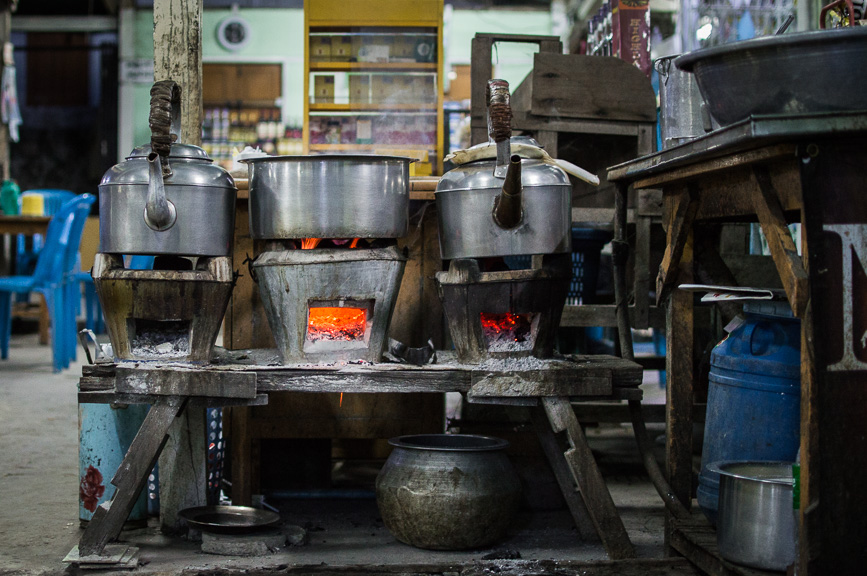

Have fun finding your perfect blend, it can be addictive!










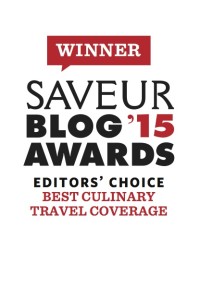
6 Comments
tammy
January 8, 2015So they say dhank you instead of thank you!
Christina
February 13, 2015I am heading to Myanmar tomorrow. Your photographs and stories are really inspirational. Thank you for sharing your experience so beautifully.
Nico & Gabi
February 13, 2015Hi Christina,
Thanks for your kind words and jealous you are heading to Myanmar! We loved it and it is in our top three places to go back to. Have a wonderful trip!
Minn
March 28, 2017Your photos are very impressive. And thanks for sharing your experience and recipe. By the way, should I add 4 cups of water to serve 4 cups of Myanmar tea?
Nico & Gabi
March 29, 2017Hi Minn,
Thanks for your message! it depends how strong you want your tea, but traditionally it is quite strong. I would only use about three cups of water for three tablespoons of tea leaves, then adjust to how many cups you want to serve. In Myanmar they usually serve them in small cups. So three cups of water should be enough for 4 servings of tea.
Hope that helps, enjoy!
Top 10 must-see places to visit in Burma - Travel with Kat
October 13, 2018[…] The former capital of Burma, Mandalay lies on the banks of the Irrawaddy River in the heart of this huge country. I long to take a glimpse beneath the city’s hectic chaos and discover a myriad of monasteries, pagodas, and teahouses. Read more about Burma’s teahouses on the blog, The Funnelogy Channel. […]